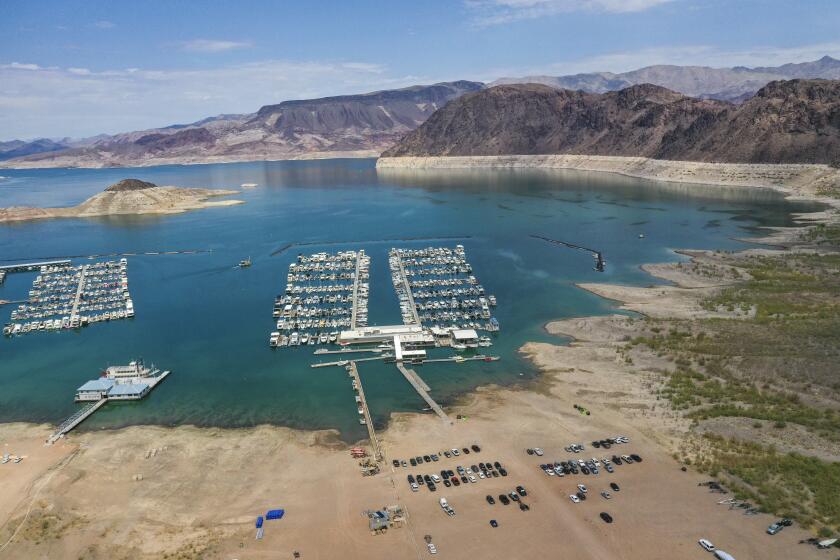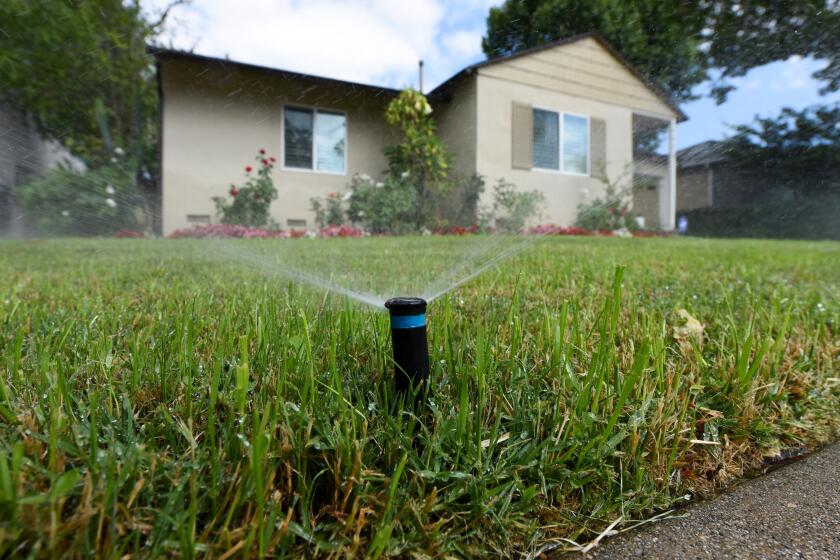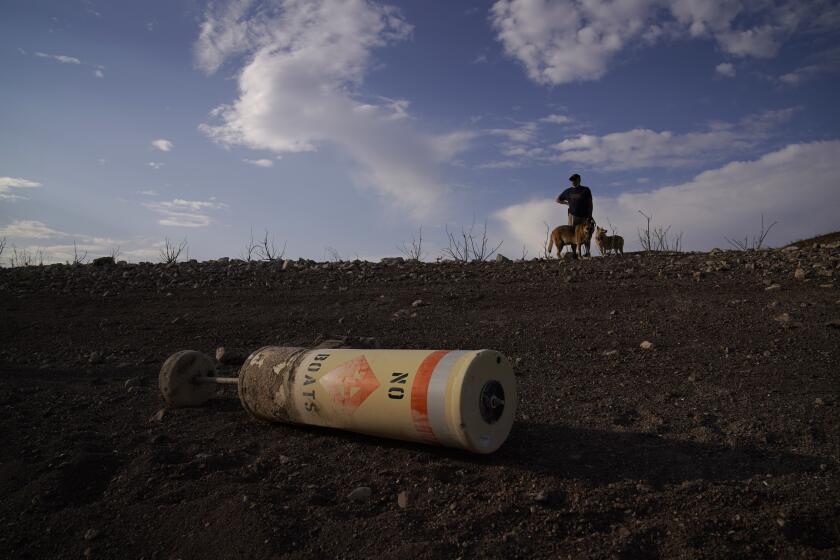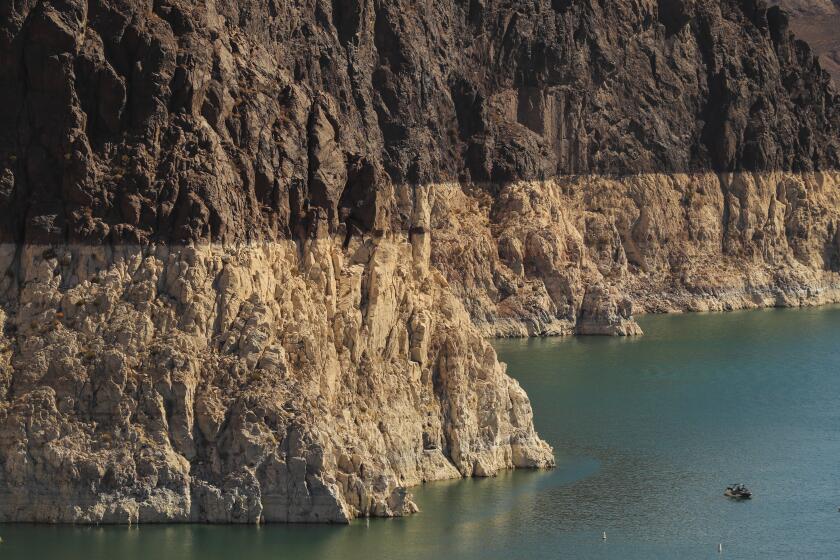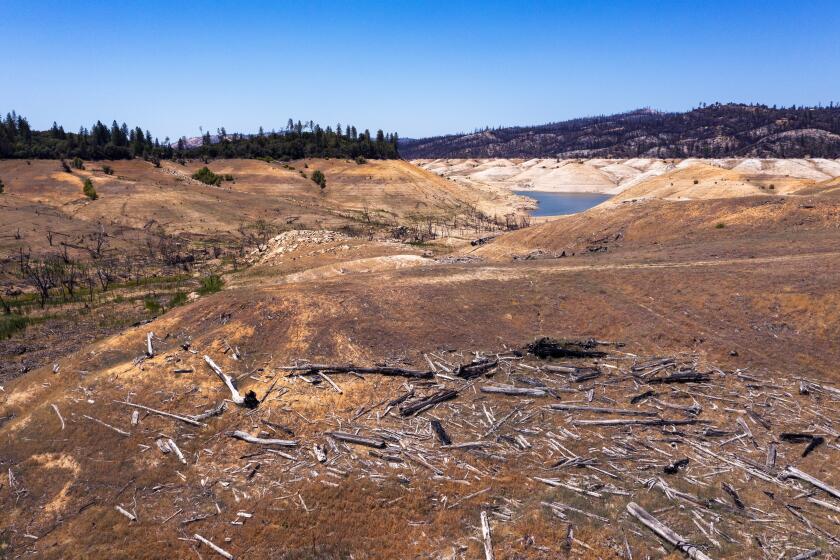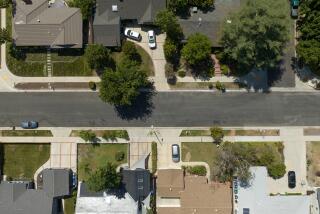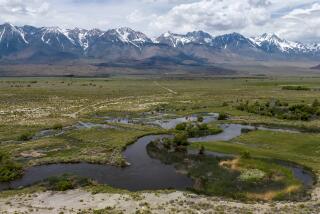With drought worsening, how close is Southern California to strict water restrictions?
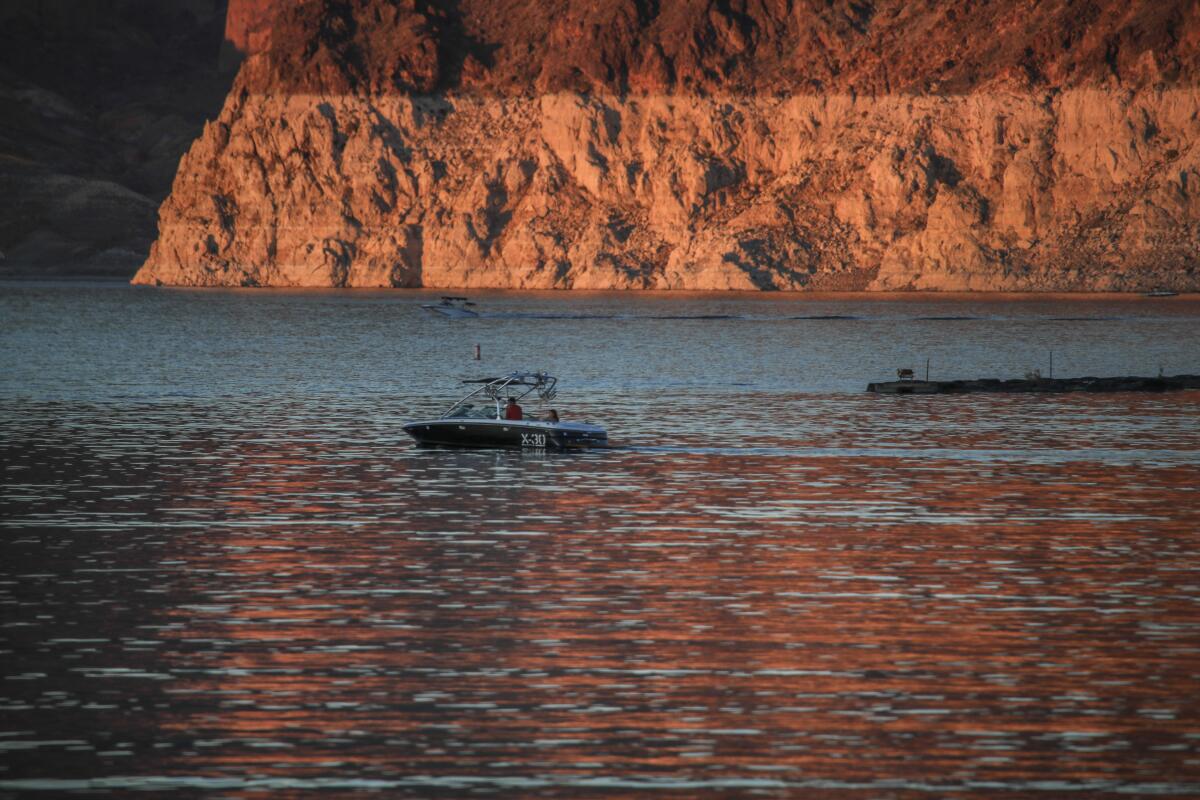
- Share via
Unlike other parts of the state, Southern California has avoided the worst of the drought-inspired water restrictions because of ample supplies.
But that could be changing.
The Metropolitan Water District of Southern California on Tuesday issued a supply alert, calling on the region to conserve vital resources and prepare for continued drought.
Southern California water district calls for local agencies and consumers to voluntarily reduce water consumption to avoid more severe restrictions.
Here’a a breakdown of what this means and what the coming months could see:
What does the alert mean?
The declaration calls on residents to voluntarily reduce their water consumption in order to preserve the region’s storage reserves. It is also intended to help mitigate the need for more severe actions in the future, which could include restricting water supplies to MWD’s 26 member agencies.
The move in itself does not bring water restrictions. But it encourages members to make such moves.
A water supply alert is the third of four escalating phases in its water supply framework, with the fourth phase — a water supply allocation — being the most extreme.
California resorts to unprecedented water cutoffs as drought worsens. How bad is it?
Under an allocation, the MWD sets reduced amounts of water that will be provided to its 26 member agencies and implements higher rates for increased use.
Officials on Tuesday encouraged member agencies to adopt measures tailored to their own local conditions, such as increasing outdoor water use restrictions, prohibiting home car-washing and requiring restaurants to serve water only upon request.
Some member agencies have already taken such steps, such as the city of Glendale, which last week approved an ordinance limiting outdoor watering to three days a week and implemented an additional drought charge on residents.
Glendale implements new mandatory water conservation requirements while officials contemplate a supply alert.
Other cities, like Los Angeles and Pasadena, never lifted watering day restrictions from previous dry years.
Where does the Southern California water supply stand?
MWD has until recently reassured residents that the region has enough supply in reserves for the year. But after a winter of critically low precipitation — as well as the rapid loss of snowpack due to fire, drought and climate change — reservoirs across the West are shrinking at a worrisome clip, and concerns about dwindling supplies are mounting.
California’s largest reservoirs are storing anywhere between 38% and 68% of capacity.
Reservoir levels for both the Colorado River and State Water Project — which provide the MWD with roughly half its water — are reaching historically low levels, officials said.
“This is a wake-up call for what lies ahead. This is climate change,” MWD Chief Operating Officer Deven Upadhyay said during a news conference about the declaration. “This water supply alert sounds the start of a unified message across our region.”
The declaration comes one day after U.S. officials declared the first-ever water shortage on the Colorado River, which is a key source of water for the region.
U.S. officials declared the first-ever water shortage for the Colorado River that serves 40 million people in the West.
“We cannot overstate the seriousness of this drought,” Upadhyay said. “Conditions are getting worse, and more importantly, we don’t know how long it will last.”
How is Southern California affected by the Colorado River drought?
In recent months, the largest reservoir on the Colorado River, Lake Mead, has tipped into crisis.
Water levels in Lake Mead on Tuesday hovered at 1,068 feet, about 35% of capacity, according to the U.S. Bureau of Reclamation. The reservoir is considered a water lifeline for about 25 million people in the West.
Lake Mead is at the lowest water levels in its 85-year history. Federal officials who manage the lake expect to soon declare a water shortage.
MWD General Manager Adel Hagekhalil said the federal decision to declare a Colorado River shortage was an indication that a stronger response is needed amid the ongoing drought.
“The Colorado River is sending us a clear message: conserve, reuse and recycle,” Hagekhalil said in a statement. “This shortage announcement moves the river into a new era and reinforces the need for Southern Californians to use less water to preserve this critical supply.”
While the shortages in the Colorado River spell deep trouble for the future, MWD’s priority rights mean that their water supply from the river won’t be affected in the immediate future.
“California is not going to be impacted next year at all. But maybe in 2023 and more likely in 2024, if the drought continues,” said Bill Hasencamp, manager of Colorado River Resources for the Metropolitan Water District.
What about the California State Water Project?
The MWD’s other imported water source, the State Water Project, is of more immediate concern.
The 705-mile storage and delivery system collects water from rivers and tributaries and redistributes it throughout the state. One of its largest reservoirs, Lake Oroville, has seen such a precipitous drop in its water level that state officials had to take its major hydroelectric power plant offline for the first time.
California water officials have shut down of a major hydroelectric powerplant at Lake Oroville in Northern California, citing the lowest-ever recorded water level.
The State Water Project has already reduced MWD’s water allocation from 10% to 5%, officials said. Next year, that allocation could be reduced to zero.
“We should be concerned about that,” MWD spokeswoman Rebecca Kimitch said of the possibility. “It is another indication of just how severe these drought conditions are. Even when the rains return, it will be harder to build back our reserves because our mountains are so dry. Everything we do now to save water will help us get through a low State Water Project allocation next year.”
What about California restrictions?
Earlier this month, California water regulators took unprecedented action, passing an emergency regulation that will bar thousands of Californians from diverting stream and river water as the drought worsens.
The State Water Resources Control Board voted unanimously Tuesday to pass the “emergency curtailment” order for the Sacramento-San Joaquin Delta watershed. The watershed encompasses a wide swath of the state, from the Oregon border in northeastern California down into the Central Valley.
In July, Newsom urged all Californians to voluntarily cut their water usage by 15%, but what exactly does that mean for the average California household?
The governor made the request as he extended a regional drought emergency to 50 counties, which comprise about 42% of the state’s population. For many, the talk of water reductions reminded them of the shriveled lawns, attenuated showers and water-bucket toilet flushing of the last devastating drought.
If achieved, a voluntary 15% water reduction statewide would save roughly 850,000 acre-feet of water, which is enough to supply 1.7 million households for a year, according to the governor’s office.
In April 2015, then-Gov. Jerry Brown ordered cities and towns across California to cut water use by 25%, marking the first mandatory statewide water restrictions in state history. Californians came close to meeting the goal, with residents reducing the amount of water they used by 24.5%. Now, a handful of years after the last drought, per-capita residential water use remains about 16% below 2013 levels.
Newsom’s request is intended to bring California water production roughly back to where it dropped to in 2015 and 2016, said Marielle Pinheiro, research data specialist at the State Water Resources Control Board. Pinheiro said the number seemed feasible to the board because the state had been able to maintain those levels during the last drought.
Household water usage varies dramatically across the state based on a number of factors, but speaking in the broadest terms, Pinheiro said a 15% reduction would equate to a cut of roughly 14 gallons a day per person.
Newsom’s drought emergency declaration excludes almost all of Southern California, where the drought picture is much less dire. That’s because the region is mostly supplied by big federal and state water systems, rather than local precipitation.
More to Read
Sign up for Essential California
The most important California stories and recommendations in your inbox every morning.
You may occasionally receive promotional content from the Los Angeles Times.
